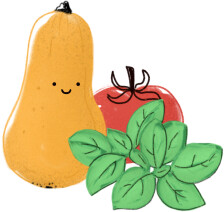Weigelie (Weigela) Standardsorte

Variety
Weigelie (Weigela) Standardsorte
created by Möwe at 21.02.2025
Season Overview
Sowing
Harvest
Harvest
J
F
M
A
M
J
J
A
S
O
N
D
1ST YEAR
FOLLOWING YEARS
Description
The weigelia belongs to the honeysuckle family (Caprifoliaceae) and was named after the botanist Christian Ehrenfried von Weigel. The plants were originally widespread in north-eastern Asia and eastern Russia. In Europe, they are used as ornamental shrubs in parks and gardens. Weigelia are deciduous, upright-growing shrubs that can grow up to 5 meters high and 3.5 meters wide. The young branches have a light brown downy hairy bark, while the older branches are gray-brown. The bell-shaped white, yellow or pale pink to dark red flowers open from the end of April to June. From July until frost, there may be a few repeat blooms.
Non hybrid
Not frost resistant
Growing tips
Weigelia are undemanding and extremely adaptable. A sunny to semi-shady location with fresh to moist, nutrient- and humus-rich acidic soil is ideal. In principle, however, the weigelie tolerates all garden soils. However, waterlogging should be avoided at all costs. During long periods of drought, the weigelie should be watered. In spring before budding, an application of compost and fertilizer containing nitrogen and potassium is recommended. Pruning prevents early senescence of the shrubs and should be carried out immediately after flowering. The branches are shortened to the desired length, old and too dense branches are cut off close to the ground. If radical pruning is necessary, it should be carried out in winter. The best time to plant is spring, so that the plants have enough time to take root.
Details
Germination temperature
20 °C (Degrees Celsius)
Seeding distance
120 cm
Row spacing
120 cm
Seeding depth
1 cm
Companion Plants
Antagonistic Plants
No antagonistic plants
Diseases
No diseases
Pests
Nematodes
Aphids